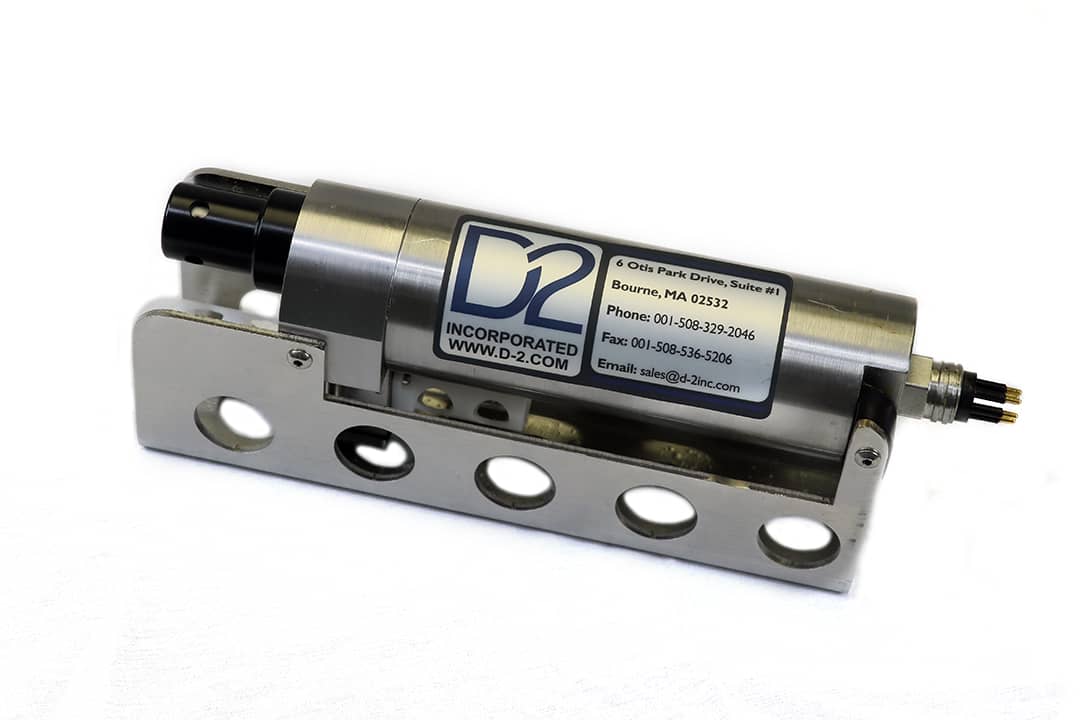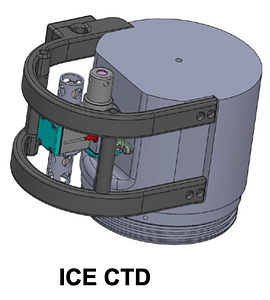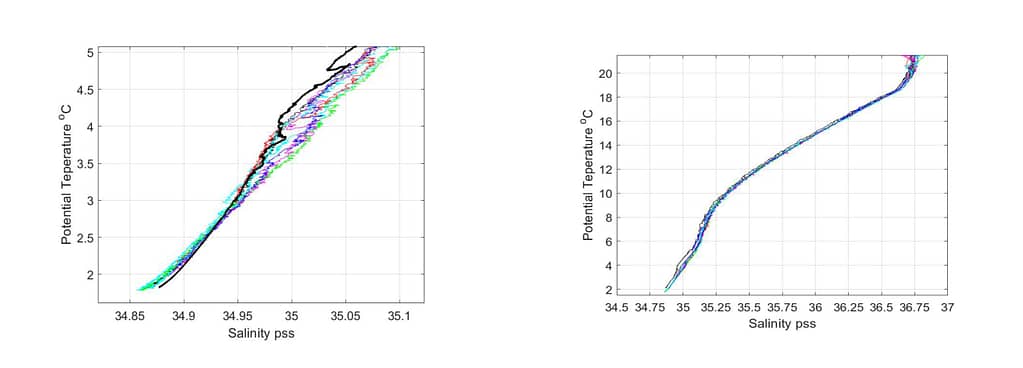D-2 Inc. Hybrid CTD Data Analysis


This is the D-2 Inc. Hybrid Conductivity, Temperature, Depth CTD Sensor. Two versions of the technology have been built: one capable of full ocean depth, another that will be fielded in the Arctic on an under-ice profiler. Our CTD cell, a U.S. patented technology, is the first new conductivity cell to enter the market in 30 years. This new conductivity sensor technology allows for smaller lightweight design, improved precision and free flushing of the sensor (no pump required). The sensor has full ocean depth precision and resolution of .001 mS/cm. This technology has recently been evaluated and evolved under a joint NOPP grant involving laboratory work and piggy-back ocean deployments. The initial deep ocean observations under this program documented a small drift in measured conductivity over time (Fougere et al., Oceans 2021 doi: 10.23919/OCEANS44145.2021.9706077) that was diagnosed to be due to degradation of the annular electrodes in the cell. The electrodes were redesigned and subsequent deep ocean observations suggest that the drift problem has been rectified.
CTD Ocean Data Results...

Currently, data are being collected with the new cell design by researchers from Bermuda Institute for Ocean Sciences (BIOS) in partnership with scientists at Woods Hole Oceanographic Institution (WHOI). These data show that the D-2 Inc. CTD obtains data comparable to the operational sensors now being fielded by the ocean observing community. The figures above show potential temperature-salinity data (full depth span right, expanded abyssal view left) obtained on casts spanning Dec 6, 2022 to Feb 5, 2023. To date, a total of 64 casts of varying depth have been obtained. The figures above are constructed with just the deep stations. The black curve in the left panel is from the BIOS ship-based CTD system, shown for reference.
CTD Lab Data Results

In addition to deep ocean observations, the response characteristics of the D-2 Hybrid CTD were assessed by lowering sensors at various rates in WHOI’s response tank facility. The tank is stratified with cooler, fresher water overlying warmer, saltier water – double diffusive convection maintains a sharp interface between the layers. Hybrid CTDs were lowered through the interface at several speeds to characterize the transient response of the instrument.
The above figure shows vertical profiles of Temperature (T), Conductivity (C) and Salinity (S) at profile speeds of 10 (black), 25 (blue) and 50 (red) cm/s. The 25 and 50 cm/s curves have been successively offset by ~2 m for clarity. From these data, the T probe is judged to have a response time of around 0.5 s, which is quite typical for standard CTD sensors. The conductivity data shows an abrupt jump at the top of the interface with a more rounded drift into the lower layer conductivity. The latter may manifest reduced flow in the fluid boundary layer within the cell and/or a small thermal mass effect. After response correction, the resulting salinity data show a rapid transition through the interface with no spiking.
CTD Brochure: CTD Brochure R3
Ultra Low Power CTD Brochure: ULP-CTD Brochure
CTD and ULP CTD Data Sheet: CTD-ULP-Data-Sheet